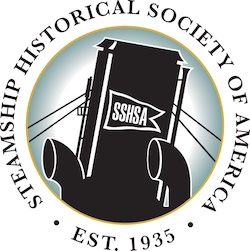Historical note
The Maryland Drydock Company was organized by a group of local financial firms and well-known businessmen during the immediat aftermath of World War I. Fidelity Securities Corporation of Maryland, The Fidelity Trust Company, Robert Garrett and Sons, and Alexander Brow and Sons were the financial concerns most interested in the new shipyard. Its Board of Directors included these prominent local individuals: Howard Bruc, Frank A. Furst, Van Lear Black, and B. A. Brennan. Mr. B. C. Cooke, who had headed the Wisconsin concern, was elected president. They acquired the Globe Shipbuilding and Drydock Company based in Superior, Wisconsin then transferred the facility to Baltimore Harbor on land along the Patapsco River in 1919. The Globe Shipbuilding and Dry Dock Company of Maryland was incorporated January, 1920.
The first keels were laid for two tankers by the end of 1920 on the 7,000-ton capacity drydock. Approximately 1,000 workers delivered the S.S. San Leopoldo and the S.S. San Leonardo one year later. Over the next twenty years, the Maryland Shipbuilding and Drydock Co. facilities steadily grew into an advantageous position at the start of World War II. During World War II, they converted numerous vessels into warships at such a steady pace that the Navy Department approved additional plant expansions to meet demands. The company employed over 10,000 people to fulfill contracts for shipbuilding, repairs, reconditioning, and conversion work for the United States Navy, Maritime Commission, Coast Guard, Army Transport Service, and the British Ministry of Shipping.
By the war's end, Maryland Shipbuilding and Drydock Company was considered the finest East Coast repair and conversion facility for all ship types. The modern, high-capacity plant included well-equipped specialty shops, including electrical, sheet metal, steel fabrication, and machine shops, to seamlessly fulfill demands. The four floating dry docks offered lift capacities from 7,000 to 18,000 tons. Five well-equipped piers could berth 32 ocean-going vessels simultaneously. A South Carolina subsidiary, Charleston Drydock company, focused on developing an efficient tanker repair yard to serve the southeast coast. The Company managed to survive the post WWII industry downturn. They also were the first to build "floating warehouse" vessels designed to carry cargo loaded in sealed containers, commonly referred to as coastal freighters/containerships. Notable post-war projects were converting five C-4 type bulk carriers with new, longer bow sections; lengthening the passenger and vehicle transport steamer Princess Anne; and converting dry cargo vessels Santa Elian and Santa Leonor to container ships for Grace Line, Inc.; and "jumboizing" ten T-2 tankers for oil companies like Texas City Refining, Texaco, and Exxon with a new mid-body insert. Also, they created an Industrial Products Division to diversify their portfolio. They designed, manufactured, installed, and serviced central station, industrial, marine, and Navy power equipment, including surface condensers, heat exchangers, evaporators, pressure vessels, and refinery towers.
Maryland Shipbuilding and Drydock Company was bought out by Fruehauf Trailers in 1970 and millions of dollars were spent on the Baltimore shipyard. The economic downturn of the late 1970s and early 1980s caused the Company to go officially bankrupt in 1984.


